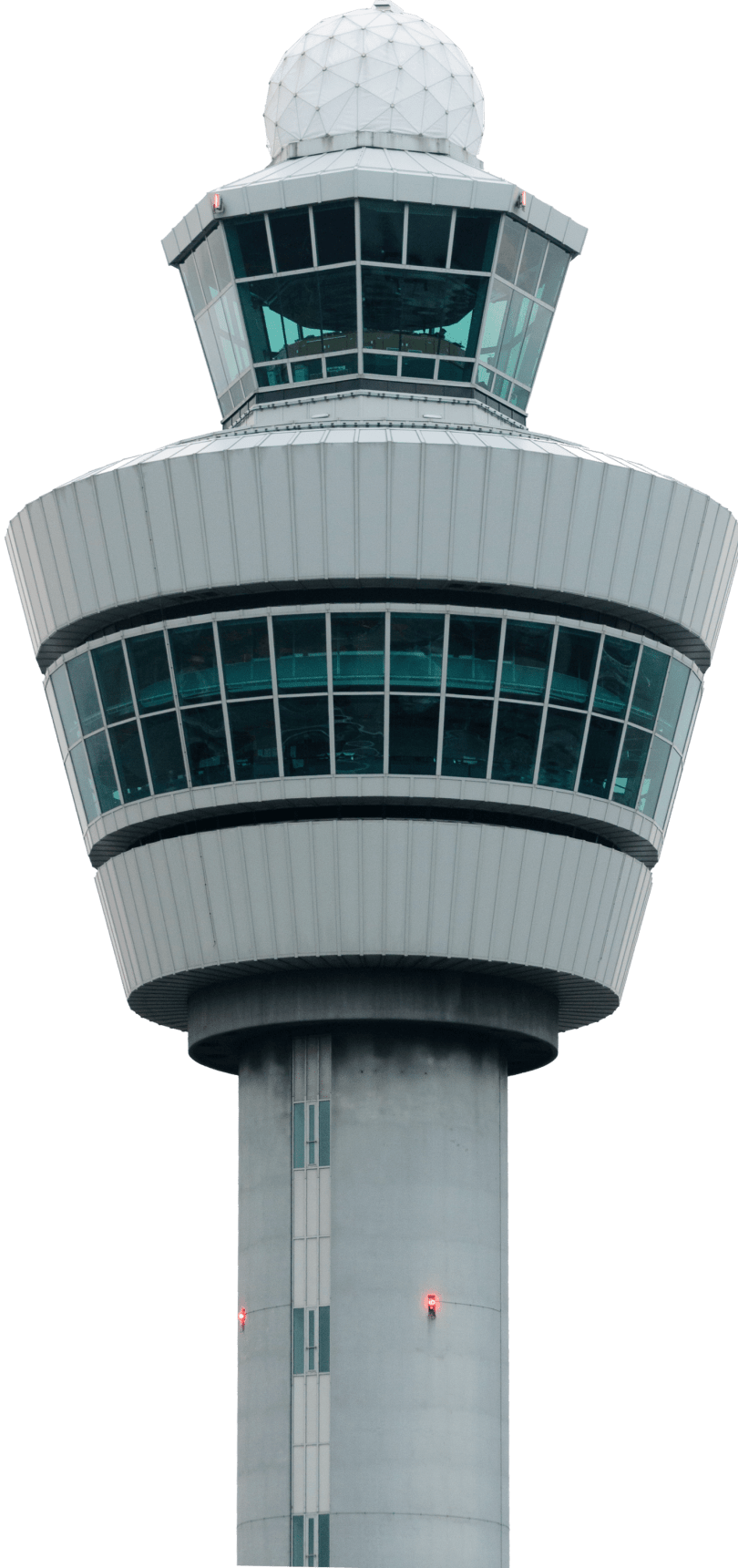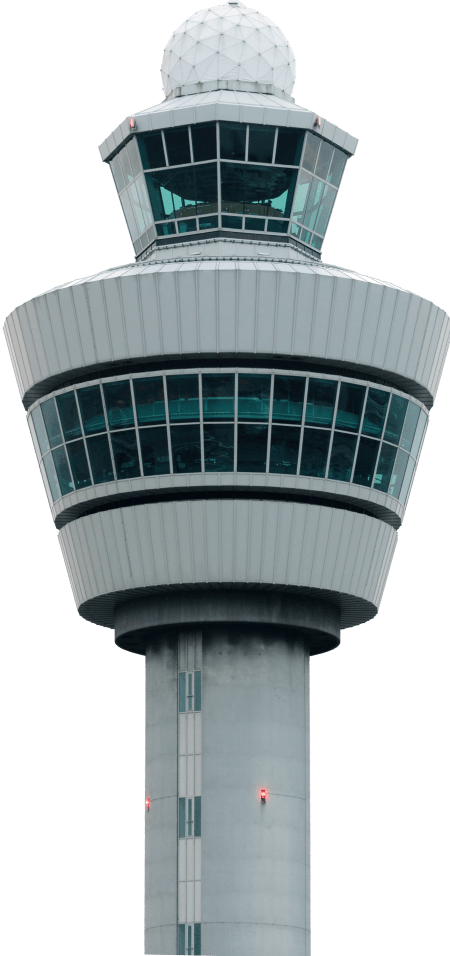


EUROCONTROL have issued two possible scenarios
for Europe until the end of June 2021, which act as a
reasonable barometer for global outcomes. In Scenario
A, there will be a partial improvement in the second
quarter with Scenario B delaying any resurgence until the
third quarter.
Eamonn Brennan, Director General EUROCONTROL,
says once vulnerable citizens have been vaccinated, non-
essential air travel could become more accessible. This “would
facilitate a small improvement during Q2, followed by a larger recovery in the summer period. If that’s the case, then we could see levels around -55% of 2019 by June”.
Equally possible, however, is governments exercising extreme caution and keeping travel restrictions in place. If that is the case, traffic will be down 70% in June.
International Air Transport Association (IATA) figures for the global industry similarly suggest 2021 will see somewhere between a 13% and a 50% improvement on 2020. That should be seen in the context of an overall drop in demand of some 66% last year, which of course started brightly in the first two months.
CANSO, Airports Council International, and International Civil Aviation Organisation (ICAO) have also issued ideas on the future. In a recently published white paper, Educated Guess: Interpreting traffic forecasting during the pandemic, CANSO has paid particular attention to forecasting issues and the need to reshape the approach for the future.
Contributing author, Paul Ravenhill, Technical and ATM Director, Think Research, noted: “Truth is that the detailed underlying forecast models that drive medium and long-term traffic forecasts will need to be re-calibrated as each existing assumption is challenged by the new normal – and that could mean higher uncertainty in forecasts for several years.”

Time machine
Janusz Janiszewski, CEO of Polish air navigation service provider (ANSP), PANSA, believes the crisis has served as a kind of dual time travel machine. “On the one hand, it has taken us – the ANSPs, airports and airlines – back to the traffic level of 15 years ago,” he says. “On the other hand, it has pushed us into the future and forced us to use advanced technologies to work and communicate. I see this as a challenge rather than a threat.”
PANSA has enacted various strategies to overcome the crisis based on an acceleration of its digital transformation.
Managing drones is a prime example. PANSA is already coordinating drones used for the transport of medical samples, and has also developed PansaUTM, an automated unmanned aerial vehicle (UAV) flight coordination and flight plan management concept.
Research and development (R&D) overall have been special considerations and consolidated in NaviHub, a project for designing, deploying and testing innovative aviation projects in field conditions.
“I believe our investments in new technologies will continue keeping Polish skies safe and will help to maintain low delay levels during growing traffic in the future,” says Janiszewski. “And from the perspective of a passenger it will be more comfortable and faster. PANSA can beat the crisis and gain much more than it loses.”
The incredible disruption does indeed give ANSPs the chance to reassert their value to the industry.
“Now is the time to embrace technologies that give us the opportunity to offer our customers more flexible and efficient services,” says Graeme Sumner, CEO Airways New Zealand and CANSO Executive Committee Member at Large. “These include digital air traffic control and airspace design, and virtual simulation and training technologies.”
His view is echoed by Neil Bowles, Executive Vice President, Searidge Technologies, who is confident in the benefits of digital towers. “Technology and innovation don’t stand still of course, and artificial intelligence will enable new systems to support air traffic controllers in making decisions, harnessing data available to them in a digital tower,” he says. “Digital towers are here, but there’s so much more to come.”
Most observers also agree that there is a need to reform beyond the implementation of innovative digital solutions. Sustainability, for example, is a key lesson learned for many and must become a cornerstone of all ANSP businesses.
One of the plusses from the drop in air traffic demand was the ability to provide more efficient trajectories for those flights that did manage to take to the skies. In Europe, the lack of flights allowed more direct flight profiles. EUROCONTROL Network Manager was able to ease 1,200 airspace restrictions, saving airlines up to 26,000 nautical miles every day. That brings great environmental benefits on top of a better passenger experience.
Making sure such sustainability initiatives continue to thrive will require industry collaboration. Only by talking with partner ANSPs and suppliers can solutions be found for long-haul flights, for example, which make the major contribution to emissions.
Partnerships may also be the only way to counteract the lack of revenues. Jason Harfield, CEO of Airservices Australia says the ANSP will take another 2-3 years to get to just 80% of 2019 revenues. ANSPs, he says, will no longer have the funds to “procure, own and operate certain technologies”. Partnerships are therefore integral to progress.
For its part, CANSO is playing a founding role in a pioneering leadership forum, which will look at future airspace for the entire aviation industry, including manned and unmanned traffic. A globally aligned view should enable ANSPs to embrace new technologies and sustainability while still providing a safe, quality and cost-effective service.
As Simon Hocquard, CANSO’s Director General puts it: “Getting the views of others can sometimes inspire us all to think a little differently.”
A cornerstone of business
“I believe our investments in new technologies will continue keeping Polish skies safe and will help to maintain low delay levels during growing traffic in the future.”
Janusz Janiszewski
CEO, PANSA
“Now is the time to embrace technologies that give us the opportunity to offer our customers more flexible and efficient services, these include digital air traffic control and airspace design, and virtual simulation and training technologies.”
Graeme Sumner
CEO, Airways New Zealand and CANSO Executive Committee Member at Large
“Technology and innovation don’t stand still of course, and artificial intelligence will enable new systems to support air traffic controllers in making decisions, harnessing data available to them in a digital tower, digital towers are here, but there’s so much more to come.”
Neil Bowles
Executive Vice President, Searidge Technologies
Shifting mindset
Despite the coronavirus, the role of ANSPs has not changed. They still need to provide safe access to the skies. But clinging to the old playbook is not a viable option.
ANSPs must welcome the new realities, from sustainability to the emergence of drones, and reimagine the business. Jason Harfield, CEO of Airservices Australia, says the biggest risk ahead is ANSPs becoming too focused on their own needs.
The aim must be to provide services that match customer needs.
That is challenging, particularly given ANSPs must always be ready to accommodate demand while airlines have greater control over the services they are prepared to offer, but recovery has to happen in a way that takes customer needs into account.
ANSPs will therefore have to develop scalable capacity as far as possible,
for example by securing third party provision of some or all data
services (see more). That way, ANSPs will not need the reserves to be all things to all people. And they will not only improve resilience but also environmental responsibility in the face of fluctuating demand.
Suppliers, similarly, need to accept new paradigms. Norbert Haslacher, CEO of Frequentis – speaking as his company bought the ATM voice communications and arrival management product business from the US company L3Harris Technologies – said: “Even in the currently challenging times we are committed to advance and to continuously innovate. We want to serve our customers with the best solutions and accompany them in their digitisation journey. Traffic optimisation is crucial, even and above all, in times of low traffic. It is our commitment to an efficient and environmentally sustainable air traffic management environment, driven by digitisation and automation.”





Read full article
EUROCONTROL have issued two possible scenarios for Europe until the end of June 2021, which act as a reasonable barometer for global outcomes. In Scenario A, there will be a partial improvement in the second quarter with Scenario B delaying any resurgence until the third quarter.
Eamonn Brennan, Director General EUROCONTROL, says once vulnerable citizens have been vaccinated, non-essential air travel could become more accessible. This “would facilitate a small improvement during Q2, followed by a larger recovery in the summer period. If that’s the case, then we could see levels around -55% of 2019 by June”.
Equally possible, however, is governments exercising extreme caution and keeping travel restrictions in place. If that is the case, traffic will be down 70% in June.
International Air Transport Association (IATA) figures for the global industry similarly suggest 2021 will see somewhere between a 13% and a 50% improvement on 2020. That should be seen in the context of an overall drop in demand of some 66% last year, which of course started brightly in the first two months.
CANSO, Airports Council International, and International Civil Aviation Organisation (ICAO) have also issued ideas on the future. In a recently published white paper, Educated Guess: Interpreting traffic forecasting during the pandemic, CANSO has paid particular attention to forecasting issues and the need to reshape the approach for the future.
Contributing author, Paul Ravenhill, Technical and ATM Director, Think Research, noted: “Truth is that the detailed underlying forecast models that drive medium and long-term traffic forecasts will need to be re-calibrated as each existing assumption is challenged by the new normal – and that could mean higher uncertainty in forecasts for several years.”
Shifting mindset
Despite the coronavirus, the role of ANSPs has not changed. They still need to provide safe access to the skies. But clinging to the old playbook is not a viable option.
ANSPs must welcome the new realities, from sustainability to the emergence of drones, and reimagine the business. Jason Harfield, CEO of Airservices Australia, says the biggest risk ahead is ANSPs becoming too focused on their own needs.
The aim must be to provide services that match customer needs. That is challenging, particularly given ANSPs must always be ready to accommodate demand while airlines have greater control over the services they are prepared to offer, but recovery has to happen in a way that takes customer needs into account.
ANSPs will therefore have to develop scalable capacity as far as possible, for example by securing third party provision of some or all data services (see more). That way, ANSPs will not need the reserves to be all things to all people. And they will not only improve resilience but also environmental responsibility in the face of fluctuating demand.
Suppliers, similarly, need to accept new paradigms. Norbert Haslacher, CEO of Frequentis – speaking as his company bought the ATM voice communications and arrival management product business from the US company L3Harris Technologies – said: “Even in the currently challenging times we are committed to advance and to continuously innovate. We want to serve our customers with the best solutions and accompany them in their digitisation journey. Traffic optimisation is crucial, even and above all, in times of low traffic. It is our commitment to an efficient and environmentally sustainable air traffic management environment, driven by digitisation and automation.”
A cornerstone of business
Most observers also agree that there is a need to reform beyond the implementation of innovative digital solutions. Sustainability, for example, is a key lesson learned for many and must become a cornerstone of all ANSP businesses.
One of the plusses from the drop in air traffic demand was the ability to provide more efficient trajectories for those flights that did manage to take to the skies. In Europe, the lack of flights allowed more direct flight profiles. EUROCONTROL Network Manager was able to ease 1,200 airspace restrictions, saving airlines up to 26,000 nautical miles every day. That brings great environmental benefits on top of a better passenger experience.
Making sure such sustainability initiatives continue to thrive will require industry collaboration. Only by talking with partner ANSPs and suppliers can solutions be found for long-haul flights, for example, which make the major contribution to emissions.
Partnerships may also be the only way to counteract the lack of revenues. Jason Harfield, CEO of Airservices Australia says the ANSP will take another 2-3 years to get to just 80% of 2019 revenues. ANSPs, he says, will no longer have the funds to “procure, own and operate certain technologies”. Partnerships are therefore integral to progress.
For its part, CANSO is playing a founding role in a pioneering leadership forum, which will look at future airspace for the entire aviation industry, including manned and unmanned traffic. A globally aligned view should enable ANSPs to embrace new technologies and sustainability while still providing a safe, quality and cost-effective service.
As Simon Hocquard, CANSO’s Director General puts it: “Getting the views of others can sometimes inspire us all to think a little differently.”
Time machine
Janusz Janiszewski, CEO of Polish air navigation service provider (ANSP), PANSA, believes the crisis has served as a kind of dual time travel machine. “On the one hand, it has taken us – the ANSPs, airports and airlines – back to the traffic level of 15 years ago,” he says. “On the other hand, it has pushed us into the future and forced us to use advanced technologies to work and communicate. I see this as a challenge rather than a threat.”
PANSA has enacted various strategies to overcome the crisis based on an acceleration of its digital transformation.
Managing drones is a prime example. PANSA is already coordinating drones used for the transport of medical samples, and has also developed PansaUTM, an automated unmanned aerial vehicle (UAV) flight coordination and flight plan management concept.
Research and development (R&D) overall have been special considerations and consolidated in NaviHub, a project for designing, deploying and testing innovative aviation projects in field conditions.
“I believe our investments in new technologies will continue keeping Polish skies safe and will help to maintain low delay levels during growing traffic in the future,” says Janiszewski. “And from the perspective of a passenger it will be more comfortable and faster. PANSA can beat the crisis and gain much more than it loses.”
The incredible disruption does indeed give ANSPs the chance to reassert their value to the industry.
“Now is the time to embrace technologies that give us the opportunity to offer our customers more flexible and efficient services,” says Graeme Sumner, CEO Airways New Zealand and CANSO Executive Committee Member at Large. “These include digital air traffic control and airspace design, and virtual simulation and training technologies.”
His view is echoed by Neil Bowles, Executive Vice President, Searidge Technologies, who is confident in the benefits of digital towers. “Technology and innovation don’t stand still of course, and artificial intelligence will enable new systems to support air traffic controllers in making decisions, harnessing data available to them in a digital tower,” he says. “Digital towers are here, but there’s so much more to come.”


